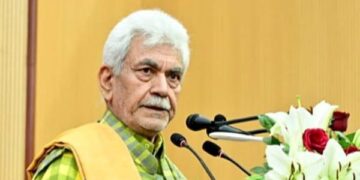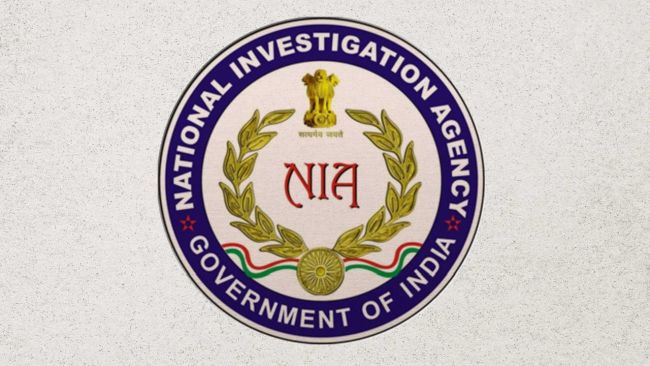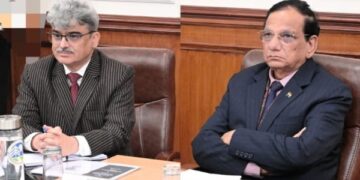New Delhi: During the four-day intense military confrontation, the Indian armed forces intercepted and neutralised swarms of Pakistani drones to push back aerial incursions, while teams of cyber warriors on ground countered digital intrusions and a wave of misinformation.
In fact, even before India decimated nine terror camps in Pakistan-occupied-Kashmir and Pakistan under Operation Sindoor with precision strikes early on May 7, many Indian websites had become targets of cyberattacks.
Days after the dastardly Pahalgam attack in Jammu and Kashmir in April, Jalandhar-based Army Nursing College’s website was hacked and defaced with an inflammatory message.
At least four Army Public Schools (APS), including APS Nagrota and APS Sunjuwan, were targeted by hackers recently, a source said on May 5.
Besides attempts to hack and compromise websites, a “campaign of misinformation” was run against India and the Indian armed forces on the internet, including on popular social media platforms, starting late April which intensified after the launch of Operation Sindoor and following counter-offensives by India after Pakistan’s military retaliation.
“At 8 pm local time on May 8, several Pakistan unmanned aerial systems, drones, combat vehicles attacked multiple IAF bases. These included Jammu, Udhampur, Pathankot, Amritsar, Bathinda, Nal, Dalhousie, Thoise, Jaisalamer, Uttarlai, Phalodi, Naliya. These were almost simultaneous and they came in waves. All our AD (air defence) guns, and other systems were waiting for them. All these waves were neutralised by our trained crew,” Director General of Air Operations, IAF, Air Marshal A K Bharti told reporters on May 11.
There was no damage on ground from “these incursions, and mass raids if I could call them from the Pakistani side”, he said.
India had deployed Barak-8 missiles, S-400 Triumph air defence systems, Akash surface-to-air missiles and indigenously developed anti-drone equipment in thwarting Pakistan’s attempts to hit 15 Indian cities on the night of May 7, official sources earlier said.
However, as India’s air defence system intercepted, engaged and neutralised hordes of drones breaching India airspace from Srinagar to Sir Creek, during the conflict, on ground cyber experts debunked a barrage of erroneous claims, and called out fake news floating in cyberspace.
Besides cyber experts, Foreign Secretary Vikram Misri, Col Sofiya Qureshi and Wing Commander Vyomika Singh, in their successive joint briefings to share details about Operation Sindoor, also fact-checked several claims made by Pakistan.
Misri told reporters here on May 9 that Pakistan made the “preposterous and outrageous” claim that it was the Indian armed forces and the Indian Air Force that was targeting cities like Amritsar and trying to put the blame on Pakistan, and countered it by saying, “…that we would attack our own cities is the kind of deranged fantasy that only the Pakistani State can come up with”.
“…this disinformation that is coming from Pakistan about India targeting the Nankana Sahib Gurdwara through a drone attack. This is again yet another blatant lie, and part of Pakistan’s disinformation campaign,” he said.
Strategic affairs experts and members of many defence think-tanks say spreading misinformation and fake news on cyberspace, especially in times of a conflict scenario, is “part of any new-age warfare”.
“It’s a mind game, even if the information is wrong, the adversary seeks to demoralise the other side,” a member of the senior management of Delhi-based Manohar Parrikar Institute for Defence Studies and Analyses, said.
The government’s Press Information Bureau (PIB), which has a dedicated Fact Check Unit, has debunked a series of false claims since the Pahalgam attack.
On April 30, it trashed claims made in posts by “several pro-Pakistan social media accounts” that the then commander of Indian Army’s Northern Command, Lt Gen MV Suchindra Kumar, had been ‘removed’ from his post after the Pahalgam attack, and dubbed it as “fake”.
Soon after the cyberattacks, a defence source on May 5 said that “appropriate and necessary measures” were being taken to “bolster” cybersecurity infrastructure, “enhance the overall resilience” of online platforms and “strengthen digital defence” mechanisms to safeguard against further “intrusion attempts”.
Furthermore, “cybersecurity experts and agencies are actively monitoring cyberspace” to detect any additional cyberattacks, particularly those that may be sponsored by threat actors having alleged cross-border link, the sources had said.
The Headquarters Integrated Defence Staff, in a post on X on Tuesday, said the “successful conduct” of Operation Sindoor has set “new normals in India-Pakistan relations”, highlighting the country’s strength and national resolve through military superiority in the “new-age warfare”.
“Synergised Force application through jointness and integration achieved in #OpSindoor with demonstrated battle effectiveness of indigenous kinetic force multipliers was showcased to the #FSAs, while highlighting Technological Superiority of the Indian armed forces in niche non-kinetic domains of space, cyber and electronic warfare,” it posted.
While India and Pakistan have reached an understanding to stop all firings and military actions, Indian military and cyber warriors remain vigilant to thwart any misadventure from the adversary, in air or in digital domain.






